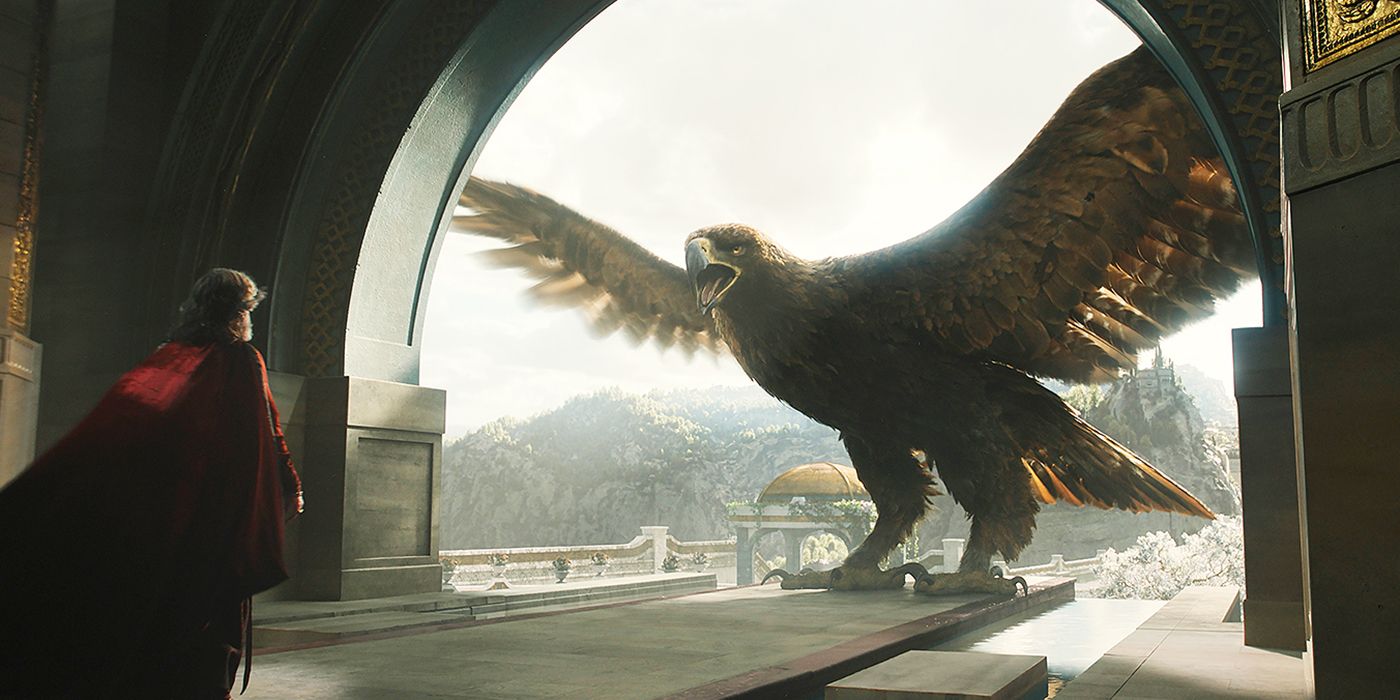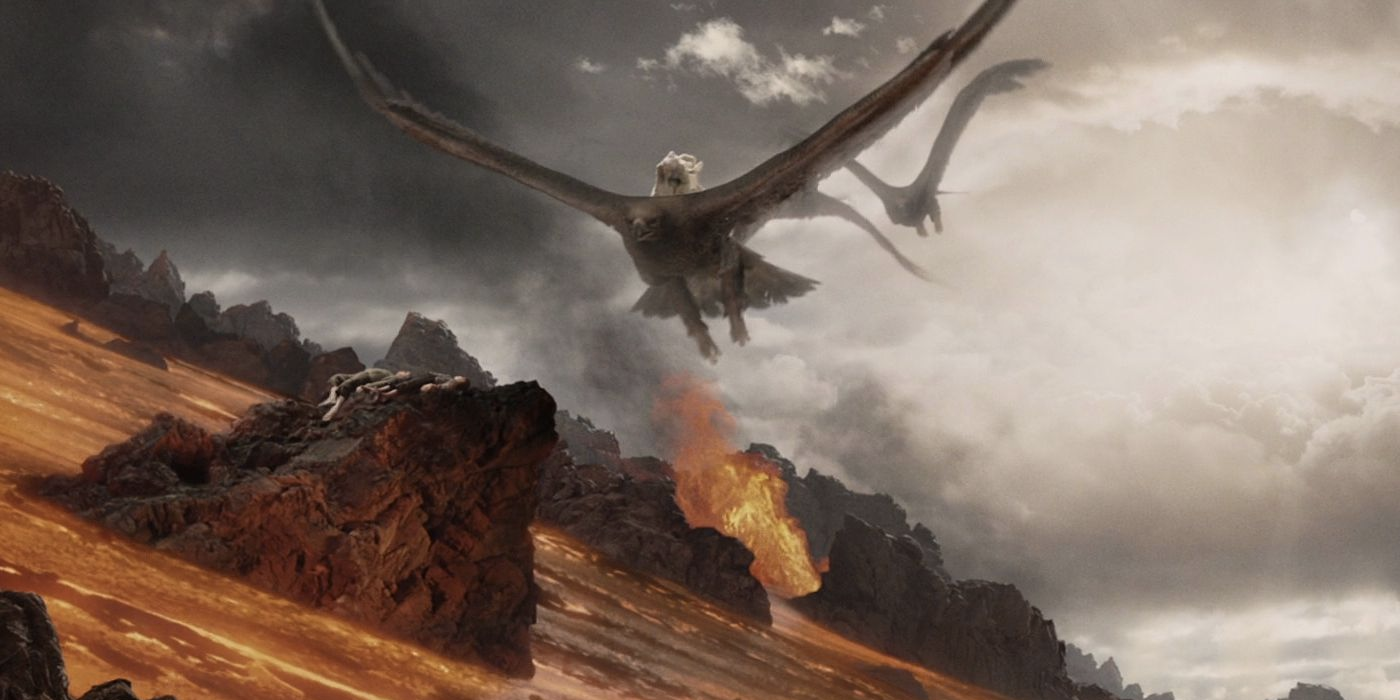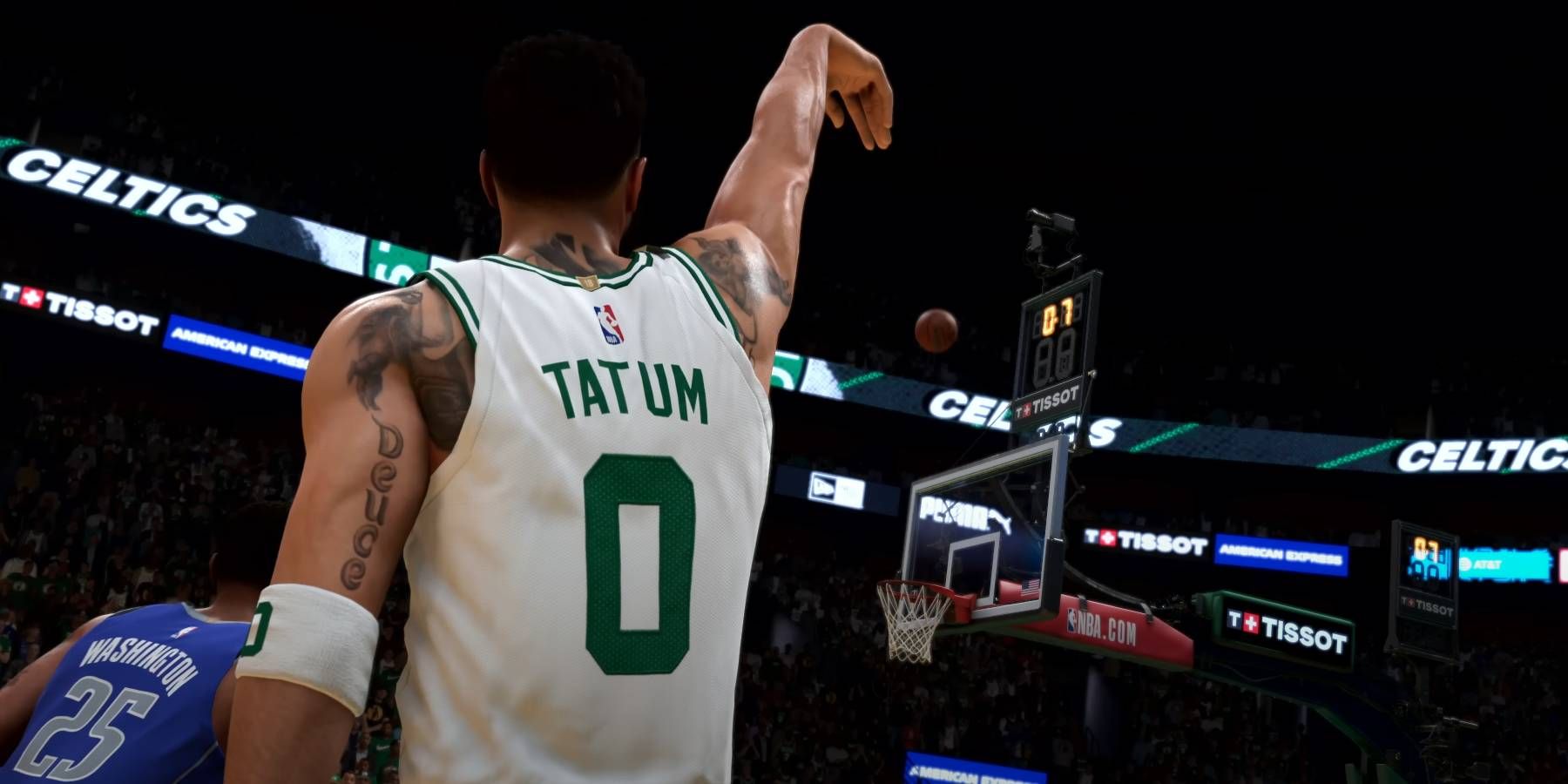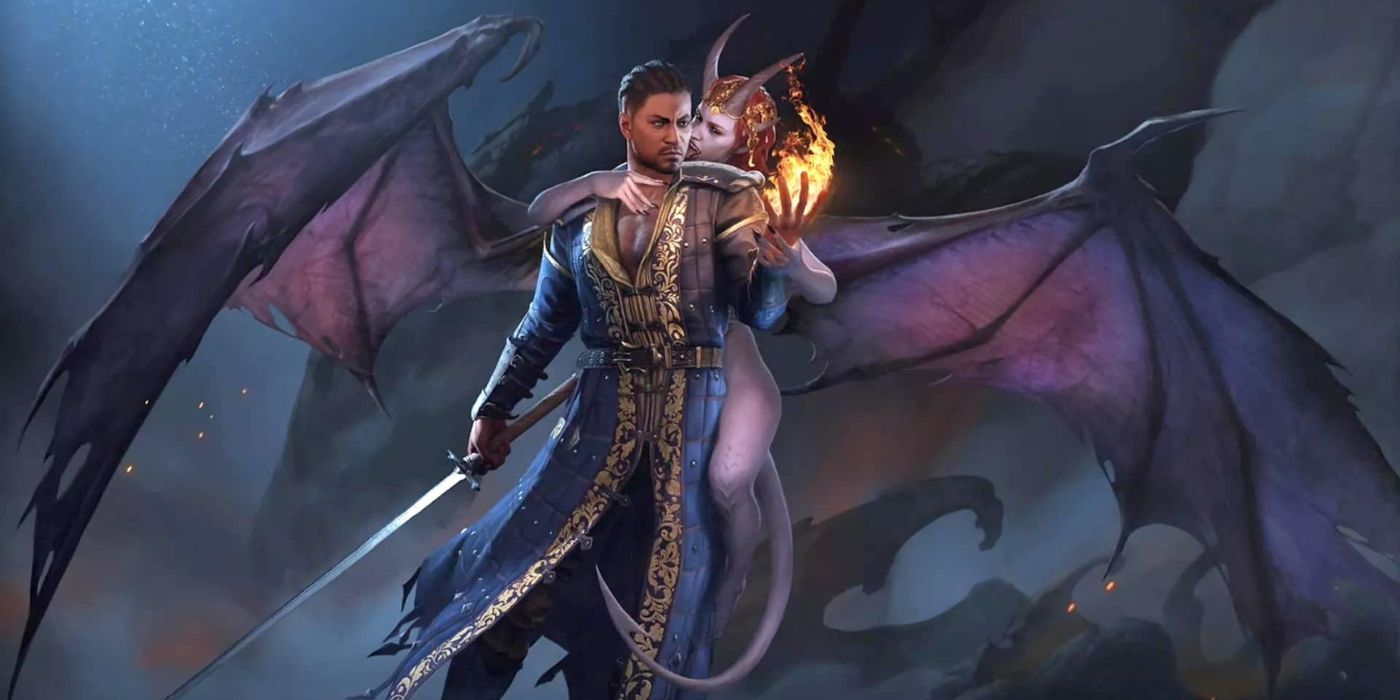
Sign in to your Collider account
 Image via Prime Video
Image via Prime Video
"The Eagle and the Scepter," the third episode in The Lord of the Rings: The Rings of Power Season 2, ends on a high note. As Queen Regent Míriel (Cynthia Addai-Robinson) faces an uproar during her coronation in Númenor, an Eagle appears, further stirring turmoil. In the heat of the moment, Míriel's cousin and political rival, Pharazôn (Trystan Gravelle), takes advantage of the mythical being showing up and stands in front of it, sword in hand, and is hailed as the new king of Númenor. The whole scene is very confusing, raising one primary question: what does the Eagle mean? Is it really there for Pharazôn?
Who Are the Great Eagles in The Lord of the Rings?
 Image via New Line Cinema
Image via New Line Cinema To understand what one of the Great Eagles is doing in Númenor during the Second Age, it's important to go further back in time, first, and look at what exactly their role is in J.R.R. Tolkien's Legendarium. They show up in The Hobbit and The Lord of the Rings - both the books and their movie counterparts - as divine aid when times are darkest for the heroes. Their power is so great, it's often compared to a sort of deus ex machina narrative device. Indeed, it may seem like that's what is happening when someone cries "The Eagles are coming!," but their role is actually far more important.
The Great Eagles, are majestic, powerful beings who live in Middle-earth. They are sentient giant eagles, often described as noble and wise, considered akin to guardians or protectors, and usually provide intervention when situations are dire during a conflict. They are said to have been created by Manwë, the chief of the Valar (the angelic powers who have shaped the world and look after it), to serve as his messengers and observers in Middle-earth. They are also highly intelligent, capable of speech, and possess immense strength and sharp vision.
The fact that the Eagles rarely appear or take sides has given them a reputation for being just and fair. They only intervene when the heroes are facing serious risks. Because of this, whenever the Eagles show up, it's perceived as a clear message that the Valar consider the side they aided to be the right one. For example, when the Eagles rescue Thorin Oakenshield's (Richard Armitage) company at the end of The Hobbit: An Unexpected Journey, it is seen as an approval by the gods that their quest to retake Erebor has the support of the Valar.
The Eagles Have an Interesting Relationship With Númenor
The Great Eagles play big roles during the First and Third Ages of Middle-earth, but, during the Second, not so much. When they do, though, it's mostly in Númenor, serving as omens or warnings in the name of the Valar. After Morgoth's defeat at the end of the First Age, the men who fought the Dark Lord beside the Host of the Valar were granted Númenor as a sign of appreciation by the deities, and the bonds between them were straightened. One of the most important segments of Numenórean society are the Faithful, for example, who worship the Valar.
Númenor exists only during the Second Age, and, in this period, the Eagles are very present on the star-shaped island. It's said that they inhabit the northern portion of the island, for example, and that there is an eyrie on top of the royal palace in the Numenórean capital of Armenelos during the reign of Tar-Ancalimon, the king who starts Númenor's slow turn against the Valar. Also, three Eagles are usually seen flying atop the Meneltarma, the holy mountain of Númenor. These particular Eagles were known as "The Witnesses of Manwë," referencing the Valar who created them, and were revered by the Numenóreans, especially while Numenóreans are still faithful to the Valar.
Despite being seen more often, though, the Eagles remain passive to the events that take place in Númenor, like in Middle-earth. However, as Númenor grows more corrupt under the influence of its later kings and especially Ar-Pharazôn (as he is known during his reign), who increasingly defied the Valar, the symbolism of the Eagles becomes a reminder of how the country has fallen from grace and the potential for divine retribution. The final appearance of the Eagles as a warning happens when Ar-Pharazôn defies the Valar and amasses an armada to sail to war against the Valar themselves in Valinor. As always, the Eagles don't take part in the event itself, but the Valar use eagle-shaped clouds to try and divert the Numenórean armada before the cataclysm that eventually sinks the island.
Is That Eagle Scene Really About Pharazôn?
Given how the Eagles are perceived in Middle-earth and Númenor, it's easy to understand why Pharazôn would want them on his side. Earlier in "The Eagle and the Scepter," he and Míriel talk about how when her father, Tar-Palantir (Ken Blackburn), was crowned, an Eagle appeared. Pharazôn then remarks that, should an Eagle appear at her coronation, too, it would be an auspicious omen. This foreshadows the final scene of the episode, as an Eagle does indeed show up.
When the Eagle appears, it's during Míriel's coronation. Eärien (Ema Horvath), daughter of Elendil (Lloyd Owen) and sister to Isildur (Maxim Baldry), causes an uproar by showing Míriel's Palantir, and the Queen Regent confirms it's indeed hers, making for the perfect riot for Pharazôn to take advantage of. It's in the middle of all the confusion that the Eagle appears. It lands on the royal palace's balcony and looks at Míriel. When Pharazôn decides to take advantage of the Eagle's appearance, the mythical being opens its wings and stars screeching in a way that seems more hostile than supportive.
With this in mind, an Eagle appearing at Tar-Palantir's coronation and appearing to Pharazôn can mean two completely different things. For the first, it's a sign of support, given that Tar-Palantir was one of the Faithful and believed in the Valar. Pharazôn, however, is not, so an Eagle showing up is most likely a sign of support for Míriel during her coronation, not to Pharazôn's claim. Cunning as he is, Pharazôn takes advantage of the opportunity in his favor, stirs public opinion against Míriel, and makes it look like the Eagle is there for him. As soon as he draws his sword, for example, the Eagle flies away.
What is interesting about this is how the Eagle simply lands, spends a few seconds, and flies away. In Tolkien lore, they are capable of speech and are known to even sing, sometimes. So how come the Eagle doesn't openly express its support for Míriel or Pharazôn more clearly? It would seem like this is an oversight, but the Valar work in mysterious ways. The Eagles can't take sides in issues like this, and the Valar are also known for not interfering for as long as possible. In this case, the Eagle showing up means both support for Míriel's claim to the Numenórean throne, and a warning against Pharazôn. Turning the situation to his favor is his merit, although it's certain to have disastrous consequences in the future.
Season 2 of The Rings of Power is streaming on Prime Video. New episodes air weekly on Thursdays.





:quality(85):upscale()/2024/10/22/308/n/49351761/c55c810967189698f3dd63.55301150_.jpg)
:quality(85):upscale()/2024/10/22/890/n/1922564/30e6edcf6718096d325a29.80808986_.png)


 English (US) ·
English (US) ·